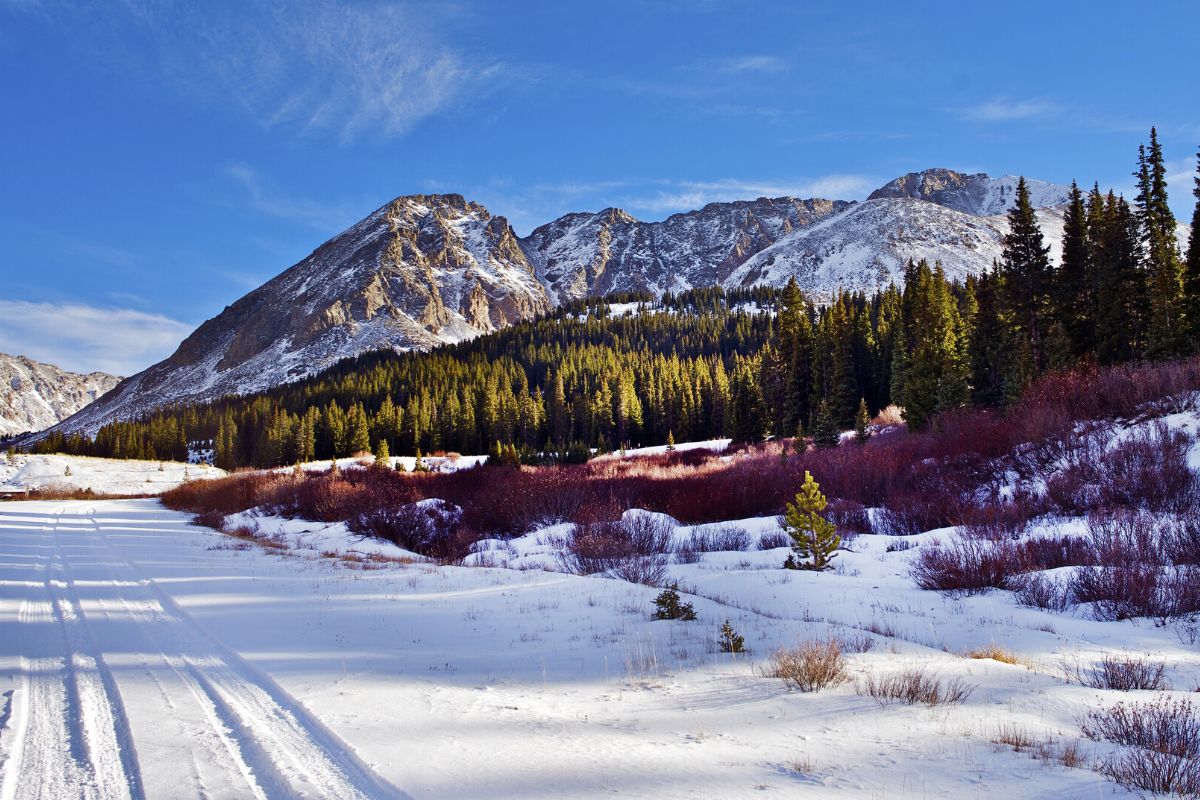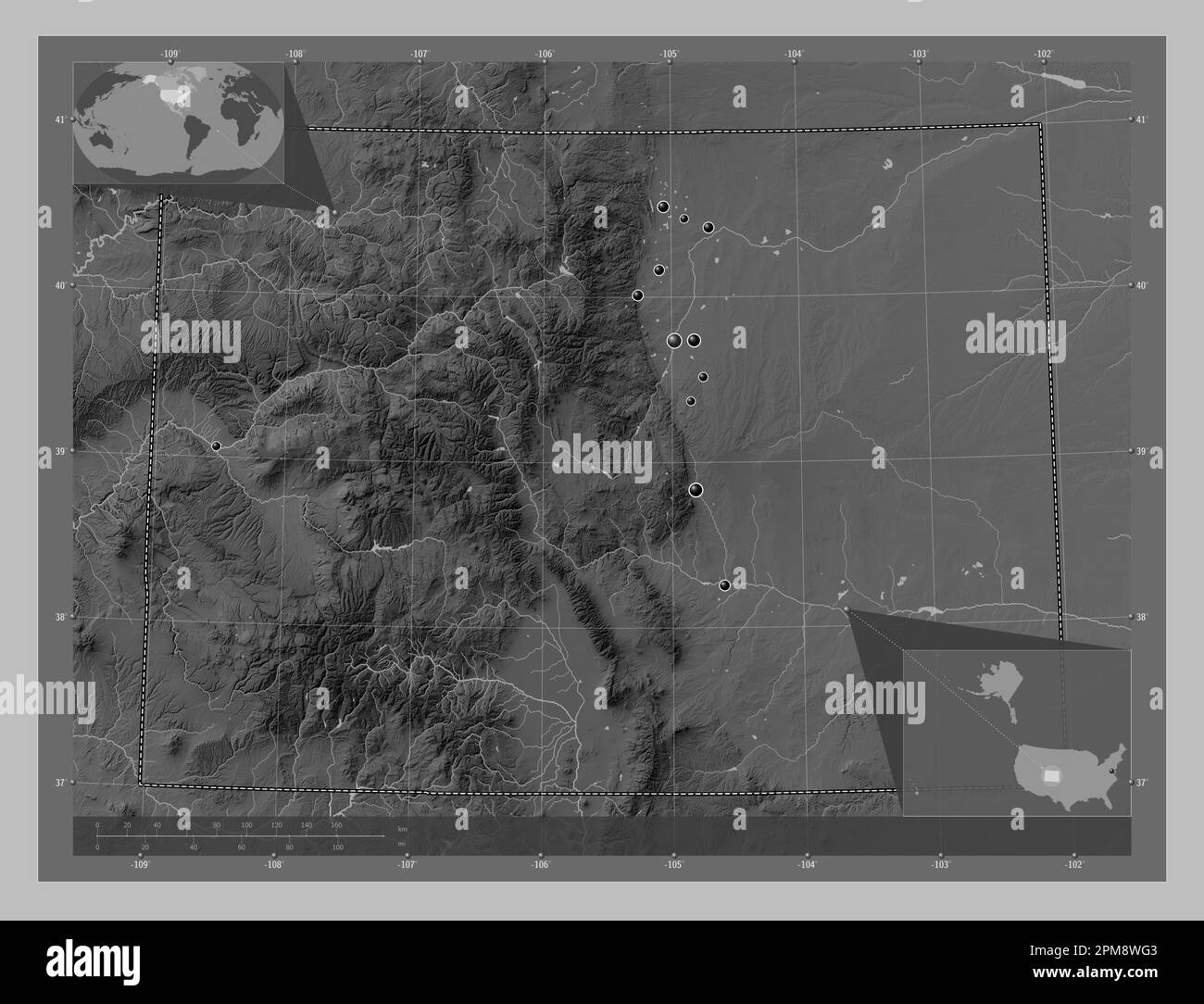Colorado Cities By Elevation: A Comprehensive Guide To High-Altitude Living
Colorado is renowned for its breathtaking landscapes and diverse geography, ranging from sprawling plains to towering mountain peaks. One of the most fascinating aspects of this state is the variation in elevation across its cities. Whether you're a resident, a traveler, or simply curious about high-altitude living, understanding Colorado cities by elevation can provide valuable insights into the state's unique geography and climate.
From the Mile High City of Denver to the picturesque mountain towns nestled in the Rockies, Colorado offers a wide range of elevations that influence everything from weather patterns to outdoor activities. This article aims to provide an in-depth exploration of Colorado cities by elevation, helping readers make informed decisions about travel, relocation, or simply gaining a deeper appreciation for the state's topography.
As we delve into this topic, we will explore the cities with the highest and lowest elevations, analyze how elevation impacts daily life, and highlight some of the most popular destinations for outdoor enthusiasts. Let's embark on this journey through Colorado's varied landscapes and discover the beauty of altitude.
Read also:Luke Wilson Married A Comprehensive Look Into His Personal Life And Career
Table of Contents
- Introduction to Colorado's Geography
- How Elevation Affects Daily Life
- Top Colorado Cities by Elevation
- Cities at Lower Elevations
- Climate Effects of Elevation
- Health Considerations at High Altitudes
- Recreational Opportunities
- Economic Impact of Elevation
- Travel Tips for Visitors
- Conclusion and Call to Action
Introduction to Colorado's Geography
Colorado's geography is a tapestry of diverse landscapes, with elevations ranging from 3,315 feet at the lowest point near the Arkansas River to over 14,000 feet at the peak of Mount Elbert. This variation creates a rich tapestry of ecosystems, climates, and lifestyles. Understanding the geography of Colorado is essential for anyone planning to visit or live in the state.
The state is divided into three primary regions: the Eastern Plains, the Rocky Mountains, and the Western Slope. Each region offers unique experiences and challenges, shaped by its elevation and proximity to major geographical features.
How Elevation Affects Daily Life
Elevation plays a crucial role in shaping the lifestyle of residents in Colorado cities. Higher altitudes bring thinner air, which can affect physical activity, sleep patterns, and even cooking methods. Residents and visitors alike must adapt to these conditions to enjoy a comfortable and healthy life in Colorado.
Furthermore, elevation influences local economies, with tourism and outdoor recreation being significant contributors to the state's GDP. Cities at higher altitudes often thrive on ski resorts and mountain activities, while those at lower elevations may focus on agriculture and industrial development.
Top Colorado Cities by Elevation
Denver: The Mile High City
Denver, Colorado's capital and largest city, sits at an elevation of exactly 5,280 feet, earning it the nickname "The Mile High City." This elevation makes Denver a gateway to both the plains and the mountains, offering a balanced climate and a wide range of activities for residents and visitors alike.
Key features of Denver include:
Read also:Barry Bruce Traynor A Comprehensive Guide To His Life And Achievements
- A vibrant downtown area with numerous cultural attractions.
- Access to world-class skiing and hiking within a short drive.
- A thriving food and beverage scene, including craft breweries and farm-to-table dining.
Leadville: The Highest Incorporated City
Leadville holds the distinction of being the highest incorporated city in the United States, with an elevation of 10,152 feet. This historic mining town offers a glimpse into Colorado's past while providing modern amenities for residents and tourists.
Highlights of Leadville include:
- Stunning views of the surrounding Sawatch Range.
- A rich history of mining and pioneer life.
- Opportunities for hiking, fishing, and snow sports.
Aspen: A Mountain Paradise
Aspen, located at an elevation of 7,908 feet, is a world-renowned destination for skiing, art, and culture. This luxurious mountain town attracts visitors from around the globe, offering a blend of natural beauty and sophisticated living.
Aspen's attractions include:
- Four world-class ski resorts within easy reach.
- An annual food and wine festival.
- A thriving arts community with galleries and performances.
Cities at Lower Elevations
While Colorado is known for its high-altitude cities, there are also several towns and cities at lower elevations, offering a different lifestyle and climate. Cities like Pueblo and Grand Junction sit at elevations below 5,000 feet, making them ideal for those who prefer milder weather and less challenging altitude conditions.
These cities often serve as hubs for agriculture and industry, with a strong focus on community and family life. Visitors can enjoy a more relaxed pace while still experiencing the beauty of Colorado's landscapes.
Climate Effects of Elevation
Elevation significantly impacts the climate of Colorado cities. Higher altitudes generally experience cooler temperatures, more precipitation, and shorter growing seasons. Conversely, lower elevations tend to have warmer, drier climates with longer growing seasons.
For example, Leadville's high elevation results in cold winters and cool summers, while Denver's moderate elevation provides a more temperate climate with four distinct seasons. Understanding these climate variations is essential for planning outdoor activities and preparing for seasonal changes.
Health Considerations at High Altitudes
Living at high altitudes can pose health challenges, particularly for newcomers. The thinner air at higher elevations can lead to altitude sickness, characterized by symptoms such as headache, nausea, and dizziness. Residents and visitors must take precautions to acclimate properly and maintain good health.
Strategies for adapting to high altitudes include:
- Staying hydrated and avoiding alcohol and caffeine.
- Taking time to acclimate before engaging in strenuous activities.
- Consulting with healthcare professionals if symptoms persist.
Recreational Opportunities
Colorado's varied elevations offer a wealth of recreational opportunities for outdoor enthusiasts. From hiking and skiing in the mountains to fishing and camping in the valleys, there is something for everyone in this state.
Some popular activities include:
- Hiking the Colorado Trail, which spans over 400 miles through diverse landscapes.
- Skiing at world-class resorts like Vail, Breckenridge, and Telluride.
- Fishing in pristine mountain streams and reservoirs.
Economic Impact of Elevation
Elevation plays a significant role in shaping the economy of Colorado cities. Higher-altitude towns often rely on tourism and outdoor recreation, while lower-elevation cities may focus on agriculture, manufacturing, and transportation. This diversity contributes to the state's robust economy and provides opportunities for residents in various industries.
Investment in infrastructure, such as roads and public transportation, is also influenced by elevation, with higher-altitude areas requiring specialized engineering solutions to address the challenges of mountainous terrain.
Travel Tips for Visitors
Visitors to Colorado should be aware of the effects of elevation when planning their trips. Here are some tips for making the most of your visit:
- Research the elevation of your destination and prepare accordingly.
- Pack appropriate clothing for the climate and altitude.
- Plan activities that allow for gradual acclimatization to higher altitudes.
Additionally, consider visiting during different seasons to experience the full range of Colorado's natural beauty and recreational opportunities.
Conclusion and Call to Action
In conclusion, Colorado cities by elevation offer a diverse range of experiences and lifestyles. From the bustling urban center of Denver to the serene mountain town of Leadville, each city provides unique opportunities for residents and visitors alike. Understanding the impact of elevation on daily life, health, and recreation can enhance your appreciation for this remarkable state.
We invite you to share your thoughts and experiences in the comments below. Have you visited any of these cities? What was your favorite activity or attraction? Don't forget to explore our other articles for more insights into Colorado's rich geography and culture. Together, let's celebrate the beauty and diversity of Colorado's high-altitude landscapes!
References:
- Colorado Geological Survey
- National Park Service
- U.S. Census Bureau


